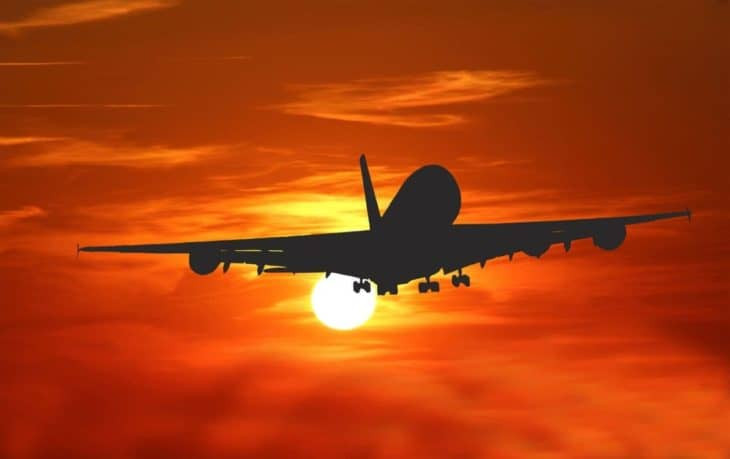Have you ever gazed out of an airplane window and wondered just how high you were soaring? The truth is, when you’re on a commercial flight, you’re most likely traveling through the stratosphere. This second major layer of Earth’s atmosphere is the typical cruising altitude for most airliners, and for very good reasons. Let’s delve into why the stratosphere is the sweet spot for air travel.
Understanding the Stratosphere: Ideal Flight Conditions
The stratosphere offers a unique set of conditions that make it exceptionally well-suited for air travel. These advantages boil down to factors that enhance flight efficiency, passenger comfort, and overall safety.
Reduced Turbulence: The Smooth Ride Advantage
One of the primary reasons airplanes favor the stratosphere is the significant reduction in turbulence. The lower layer of the atmosphere, the troposphere, is where most weather phenomena occur. This includes cloud formation and the turbulent air currents that cause bumpy flights. The image below illustrates the troposphere, the layer of weather, giving way to the calmer stratosphere above.
By flying in the stratosphere, above the majority of weather systems, airplanes encounter much smoother air. This translates to a more comfortable experience for passengers and less stress on the aircraft. While clear air turbulence (CAT) can still occur in the stratosphere, it’s far less frequent and severe than tropospheric turbulence.
Fuel Efficiency: Soaring Economically
Flying in the stratosphere also contributes significantly to fuel efficiency. As altitude increases, air density decreases. In the stratosphere, the air is significantly thinner than at lower altitudes. This reduced air density translates directly to less air resistance, or drag, acting against the aircraft.
With less drag, airplanes can maintain their airspeed at lower engine power settings. Lower power settings mean burning less fuel. In fact, the air resistance in the stratosphere can be roughly half of what it is at ground level. This dramatic reduction in drag is a major economic benefit for airlines, allowing them to save considerable amounts of fuel on each flight. Optimizing fuel consumption is not only cost-effective but also environmentally responsible.
Faster Speeds: Leveraging Thin Air
The thinner air of the stratosphere not only improves fuel economy but also allows for faster flight speeds. With less air resistance, aircraft can achieve a higher true airspeed (TAS) for a given indicated airspeed. This means airplanes can travel faster relative to the ground when flying in the stratosphere.
For commercial airlines, speed is a critical factor. Passengers expect timely arrivals, and faster flight times contribute to better scheduling and operational efficiency. Flying in the stratosphere helps airlines maintain schedules and minimize delays, enhancing customer satisfaction.
Favorable Winds: Riding Jet Streams
The stratosphere is also home to jet streams, powerful winds that can significantly impact flight times and fuel consumption. Jet streams are high-altitude currents of air that generally flow from west to east. Airlines strategically utilize these jet streams to their advantage.
Flights traveling eastward can benefit from a tailwind provided by a jet stream, increasing ground speed and shortening flight duration. Conversely, flights heading westward may encounter a headwind from a jet stream, which can increase flight time and fuel consumption. Flight planning carefully considers jet stream patterns to optimize routes and take advantage of favorable wind conditions whenever possible.
 Airplane in Sunset Stratosphere Flight
Airplane in Sunset Stratosphere Flight
Are There Airplanes That Don’t Fly in the Stratosphere?
While the stratosphere is the standard cruising altitude for most commercial airliners, not all aircraft operate in this layer. Some aircraft, particularly military planes and certain specialized aircraft, may fly in the troposphere or even higher into the mesosphere.
Military aircraft like the SR-71 Blackbird, designed for high-altitude reconnaissance, could operate at the very edge of the stratosphere and even venture into the mesosphere. However, for the vast majority of commercial air travel, the stratosphere remains the optimal altitude range, balancing efficiency, comfort, and safety.
Conclusion: Stratosphere – The Sky High Highway
In conclusion, airplanes predominantly fly in the stratosphere because it offers a confluence of benefits. The stable air, reduced turbulence, enhanced fuel efficiency, faster speeds, and favorable wind conditions all contribute to a smoother, more economical, and more efficient flight experience. While other layers of the atmosphere have their own characteristics and uses, the stratosphere serves as the sky-high highway for modern commercial aviation, ensuring passengers reach their destinations safely and comfortably.
